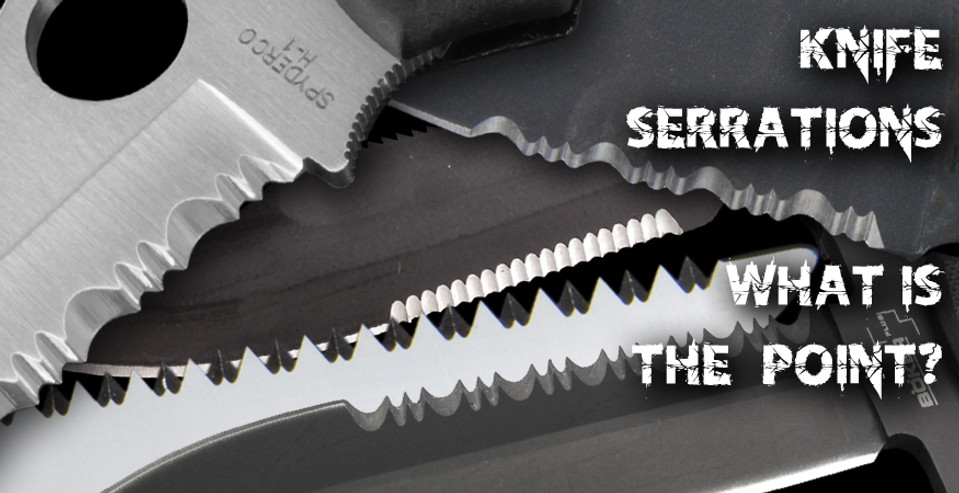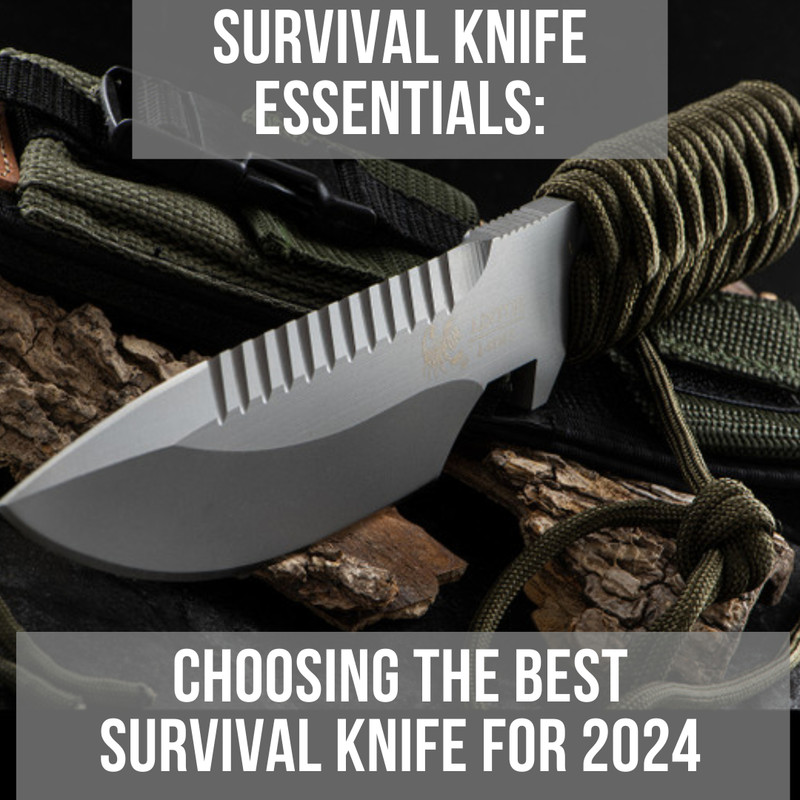Knife Serrations – What is the point?
Posted by HH on 21st Dec 2015
What is the point in serrations?
Opinions have always been mixed on the value and point of serrations, but no matter what your thoughts are, they are becoming more and more common. Some people like none, others like some, the rest like all. By, that we mean you have a choice in serrations. It is not necessarily all or nothing, you have a choice.
However, before we get to the choice, what do you actually need serrations for? Well let’s look at some common knives and tools with serrations. Bread knives are a good example and so too are saws. These have serrations because the tools are designed for ‘pull’ cuts (slicing and sawing). Now we will put that into some sort of context. Imagine you have some rope, string or even paracord in front of you. In order to cut that, you would place your edge onto and pull the knife back towards you.
The next step is to then decide whether you need or want a knife that will excel in these sorts of cuts. As we said above though you do not always have to choose all or nothing, you can go halfway . . .
Part Vs Full
Ok, so you need serrations. Do you need a blade full of them or part of a blade?
With a part serrated blade you usually get a 50/50 split with serrations to plain edge or 40/60 split with serrated taking up the 40%.
These combo or part serrated edges are seen by many as a great compromise, offering the user versatility and giving them more cutting options in a single blade. However, other people believe that this instead makes the knife a jack of all trades and a master of none. It is argued that combo edge knives cannot possibly offer the same experience or usability as a fully plain or serrated knife.
This argument is underpinned by the use of serrations on sub 7.5 cm blade (pretty much all UK Friendly Carry sized knives). The argument here is that on a part serrated sub-7.5cm knife you are going to get probably a maximum 3-3.5cm of serrations. Is this enough to really be effective? Some say yes, others say no. Again though it comes down to personal preference.
Something else that’s down to personal preference is the location of the serrations on your knife. The vast majority of knives have serrations on the belly of the knife close to the handle. This means the ‘control’ section of the knife is serrated, which isn’t ideal for things like whittling. Other people find them incredible useful though as they feel they can put more strength behind the slicing/sawing action especially when dealing with a stronger rope.
Some knives (mostly found on fixed blades) have their serrations on the spine of the blade. This means you can have a fully plain cutting edge and have a good serrated edge all on the same blade. Some people love this design. Other people though have argued it is a bad idea, because if you are using the saw edge, the razor sharp plain edge is facing directly upwards at you. Therefore, you get versatility but you also get increased risks . . .
Maybe try a dual blade knife?
If you know that you need both a plain and serrated edge, but do not fancy going down the road with serrated blades on the spine of the knife, you may want to consider a dual blade knife. These knives have a specific blade for serrated and plain edges. This gives you options and means you still only have to carry one tool.
However, depending on what tasks you need your serrated edge for the knife may not be strong enough. Because a dual blade knife will be a folding knife is it already unlikely to be as strong as a fixed blade. Also, because there are now at least two blades there are more things to go wrong on the tool. For light work and EDC a dual blade should be fine, but it’s always worth considering what your knife is actually being used for!
Types of Serrations
There are loads of variations to serrations. Some are wide and shallow such as on the Ontario Tak-1 others are narrow and pointy like on the Boker Plus Steel Mariner, and others are a mix like on the Spyderco Ladybug Hawkbill. Each have their own advantages and disadvantages, but in essence their job is the same.
One particular type of serrations we do want to highlight are ‘Veff Serrations’ which were design by knife maker Tom Veff. These appear to be very love or hate according to all the forums we have read and feedback received. Lots of the feedback seems to revolve around the styling of the serrations. Some thing they are too big, other people think they look distinctive. Another devise issue is the actual serrations themselves. This is because of the angle at which the serrations are set. Because of this angle the grip and cutting action on pull cuts is incredible, however this means you get next to no grip on push cuts. If you want an incredible pull cut experience then Veff serrations are about the best in the business.
Sharpening Serrations
Another dislike that some people have with serrations is how to sharpen them as they require a slightly different approach to plain edge knives.
The best way do us to show you this though is through video, and you don’t get better than the classic Spyderco Sharpmaker DVD. It might have been filmed in the 1980’s but the information is still spot on. Make sure you skip to 19 mins 23 secs for the section on sharpening serrated edges.
Are you a fan of serrations? Do you own and knives with serrations? We’d love to hear what your thoughts are on them good and bad!








